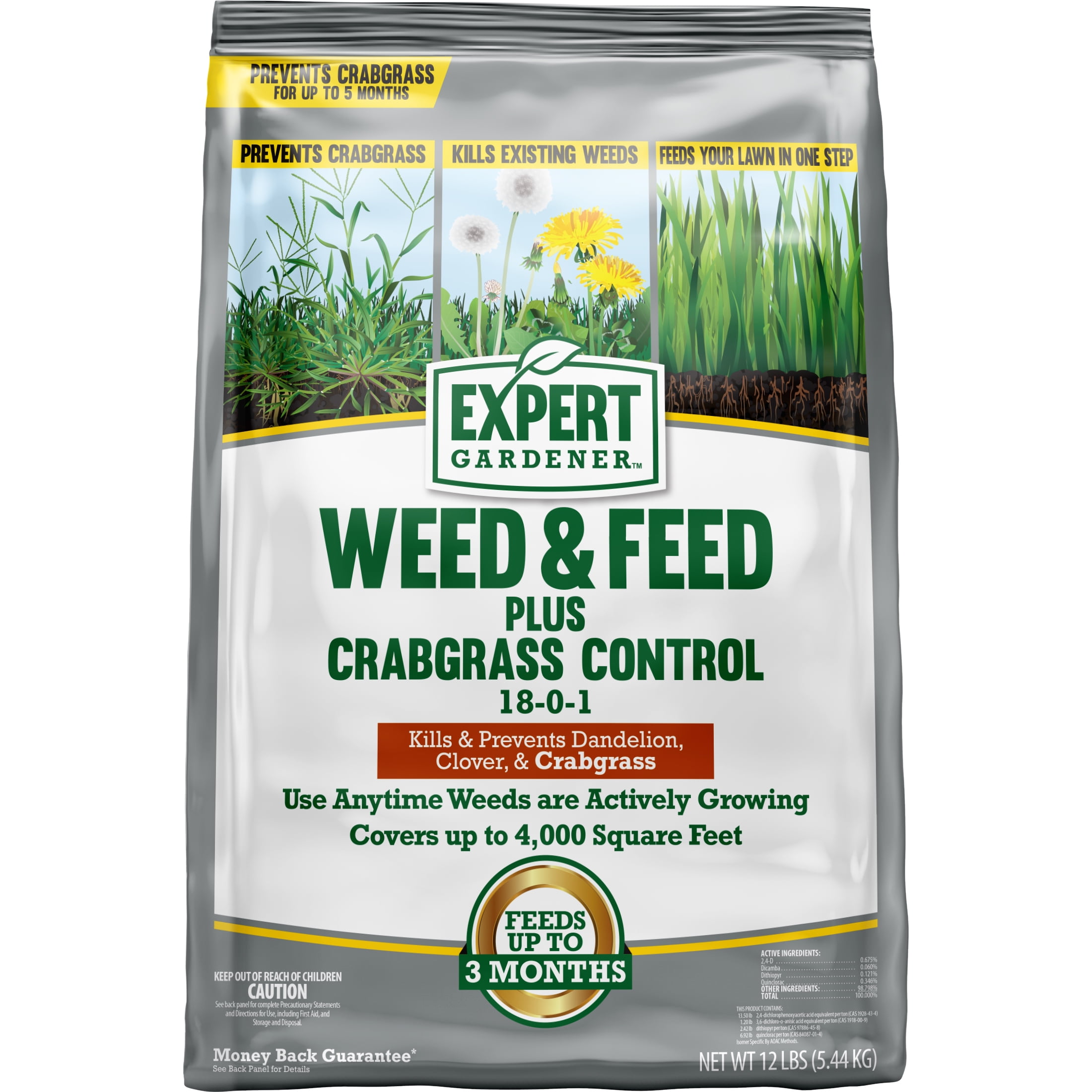9 Best Weed Killers for Lawns: Expert Recommendations and Tips for a Weed-Free Yard
Nothing ruins the look of a pristine lawn faster than pesky weeds. They steal nutrients, water, and sunlight from your grass, leaving your yard looking uneven and neglected. If you’re tired of battling dandelions, crabgrass, and other unwelcome invaders, you’re not alone.
Finding the right weed killer can make all the difference in maintaining a lush, green lawn. With so many products on the market, it can be overwhelming to choose the best one for your needs. That’s why we’ve compiled a list of the 9 best weed killers for lawns, ensuring you can tackle those weeds effectively and enjoy a beautiful, healthy yard.
Exploring Chemical Weed Killers
Chemical weed killers can be highly effective in managing unwanted plants in your lawn. Understanding the difference between selective and non-selective herbicides helps you choose the right product for your needs.
Selective Herbicides for Lawn Care
Selective herbicides target specific types of weeds while sparing your grass. They’re perfect for dealing with broadleaf invaders like dandelions, clover, and chickweed. For example, products with 2,4-D effectively manage these weeds without harming most turfgrasses. Use these herbicides when you need to maintain your lawn’s health and beauty without damaging desirable plants.
Non-selective Herbicides for Total Weed Removal
Non-selective herbicides eliminate all vegetation, making them ideal for areas where you want a clean slate. Glyphosate, a common active ingredient, kills any plant it contacts. Use these herbicides for cracks in driveways, sidewalks, or preparing a new lawn area. Be cautious, as they can damage any green plant, including your prized grass, if not used carefully.
Discovering Natural Weed Killers
Exploring natural weed killers can help maintain your lawn’s health without using synthetic chemicals. Here are some effective natural solutions you can try.
Vinegar-Based Solutions
Using vinegar as a weed killer is both effective and eco-friendly. White vinegar with 5% acetic acid concentration works well for most weeds. For tougher weeds, opt for horticultural vinegar, which contains up to 20% acetic acid.
- Mix vinegar and water in a spray bottle, maintaining a 1:1 ratio for mild solutions or using undiluted vinegar for stubborn weeds.
- Apply the solution directly to the weed, ensuring the plant gets completely saturated.
- Repeat the process over several days if necessary, especially for resilient weeds.
Salt and Soap Mixtures
Combining salt and soap creates another powerful natural weed killer. Table salt dehydrates plants, while dish soap breaks down the plant’s outer coating, improving absorption.
- Mix 1 cup of salt with 1 gallon of water in a bucket. Stir until the salt dissolves completely.
- Add a few drops of liquid dish soap to the mixture and stir again.
- Pour the solution into a spray bottle and apply directly to the weeds, focusing on the base and leaves.
- Use sparingly, as salt can affect soil quality and surrounding vegetation.
By utilizing these natural weed killers, you can maintain a lush, green lawn without resorting to harsh chemicals.
Best Weed Killer for Different Types of Weeds
Choosing the right weed killer depends on the type of weeds invading your lawn. Here, you’ll find the best options for broadleaf, grassy, and perennial weeds.
Best for Broadleaf Weeds
Use 2,4-D-based herbicides to target broadleaf weeds. 2,4-D kills weeds like dandelions, clover, and chickweed while sparing your grass. Apply it directly to the affected areas for best results.
Best for Grassy Weeds
Opt for herbicides containing quinclorac for grassy weeds. Quinclorac is effective against crabgrass, foxtail, and barnyardgrass. A post-emergent herbicide, it works best when weeds are young and active.
Best for Perennial Weeds
Choose glyphosate-based products for perennial weeds. Glyphosate tackles tough weeds like Bermuda grass, thistle, and bindweed. Although non-selective, careful spot treatment minimizes lawn damage.
Top Products: The 9 Best Weed Killers for Lawns
Finding the perfect weed killer can be a challenge, but here are the best options to keep your lawn lush and weed-free.
1. Broad-Spectrum Chemical Herbicide
Roundup Weed & Grass Killer is a top-tier broad-spectrum chemical herbicide. It’s effective against various weeds and grasses, delivering results within hours. Its fast action makes it a favorite among gardeners who need immediate improvements.
2. Selective Herbicide for Large Lawns
Ortho Weed B Gon is perfect for large lawns. It targets over 250 types of weeds without harming your grass. It’s ideal for extensive lawn areas where precision is crucial.
3. Eco-Friendly Natural Weed Control Solution
Green Gobbler Vinegar Weed & Grass Killer uses 20% acetic acid. It’s an eco-friendly choice that’s powerful enough to tackle stubborn weeds. Safe for areas with pets and kids, it’s a great natural alternative.
4. Strong Weed Killer for Tough Weeds
RM18 Fast-Acting Weed & Grass Killer is designed for tough weeds. It combines glyphosate and a fast-acting component, making it effective on hard-to-kill weeds. It’s ideal for areas where other solutions have failed.
5. Budget-Friendly Weed Killer Option
Spectracide Weed & Grass Killer offers affordability without compromising effectiveness. It’s a non-selective herbicide, perfect for budget-conscious homeowners who need broad weed control.
6. Weed Killer for Large Areas
Compare-N-Save Concentrate Grass & Weed Killer is excellent for large areas. A single gallon covers up to 25,000 square feet, making it economical for extensive applications.
7. Pet-Safe Weed Killer
Dr. Earth Final Stop Weed & Grass Killer is pet-safe and eco-friendly. It uses essential oils to eliminate weeds without harmful chemicals, ensuring the safety of your pets and family.
8. All-Natural Ingredient Weed Killer
BioSafe Weed Control is derived from naturally occurring fatty acids. It’s an all-natural option that’s non-toxic, providing an effective weed control method without synthetic chemicals.
9. Fast-Acting Weed Killer Formula
Scotts Liquid Turf Builder Weed Control offers a fast-acting solution. Its formula shows visible results in hours, making it an excellent choice for quick weed elimination.
Considerations When Choosing a Weed Killer
When selecting a weed killer, several important factors will guide you to the best choice for maintaining a healthy, lush lawn.
Assessing Your Lawn’s Needs
Evaluate the type of weeds and the extent of the infestation in your lawn. Decide whether you need a selective herbicide that targets specific weeds or a non-selective one for broader application. If you’re dealing with crabgrass, you might prefer a pre-emergent herbicide to prevent growth.
Environmental and Safety Concerns
Consider the impact of the weed killer on the environment and your household. Choose eco-friendly options, like vinegar-based solutions, if you want to minimize chemical use. Ensure pet-safe and child-safe products to avoid potential health risks. Look for OMRI (Organic Materials Review Institute) listed products for organic gardens.
Cost vs. Effectiveness
Compare the prices of different weed killers and balance them with their efficacy. Some budget-friendly options may require more frequent applications, while higher-cost products might offer long-lasting results. Check product reviews and ratings to determine the best value for money.
Application Tips for Effective Weed Control
For effective weed control, understanding the best practices for application can make a significant difference.
Best Time to Apply Weed Killers
Choose early morning or late evening to apply weed killers. Avoid using them during the heat of the day as the product could evaporate quickly. Apply when no rain is forecasted for at least 24 hours to allow the herbicide to work properly. Cooler temperatures and minimal wind ensure the weed killer stays on target, reducing the risk of affecting other plants.
Application Techniques for Optimal Results
Shake the herbicide container well before use. Use a sprayer for even application; ensure it’s properly calibrated according to the weed killer’s instructions. Spot-treat weeds close to desired plants to minimize potential damage. Wear gloves and protective clothing to reduce skin exposure. Avoid mowing the lawn right before or after application to let the weed killer settle and absorb effectively.
Maintaining Your Lawn Post-Weed Treatment
After applying weed killer to your lawn, it’s essential to maintain your lawn’s health and appearance. Here’s how to keep your lawn in top shape.
Regular Lawn Care and Maintenance
Watering: Keep your lawn well-watered. Deep, infrequent watering encourages deep root growth. Aim for 1-1.5 inches of water per week, including rainfall.
Mowing: Mow at the right height. For most grasses, 2.5 to 3 inches is ideal. Mow regularly, removing no more than one-third of the grass blade at a time.
Fertilizing: Feed your lawn. Use a balanced fertilizer in early spring and fall. Look for slow-release formulas to consistently nourish your grass.
Aerating: Aerate your lawn annually. This reduces soil compaction and improves water and nutrient uptake. Fall is typically the best time for aeration.
Monitoring and Follow-up Treatments
Inspecting: Regularly inspect your lawn. Look for signs of new weed growth or lawn diseases. Early detection helps you address problems before they spread.
Reapplying: Plan for follow-up treatments. Some weeds may need multiple herbicide applications. Check product labels for safe reapplication intervals.
Overseeding: Overseed bare spots. This promotes a dense, uniform lawn which helps crowd out weeds. Use a grass seed blend appropriate for your region.
Weed Prevention: Apply pre-emergent herbicides in early spring. These prevent weed seeds from germinating, reducing the need for future treatments.
Maintaining soil health and conducting periodic inspections are key steps for a lush, weed-free lawn. Follow these strategies to ensure your lawn thrives after weed treatment.
Conclusion
Achieving a lush, weed-free lawn requires the right approach and consistent care. By choosing the best weed killer for your specific needs and following proper application techniques, you’ll effectively manage weed growth. Remember to maintain your lawn through regular watering, mowing, and fertilizing. Keep an eye out for new weeds and plan follow-up treatments as necessary.
Overseeding bare spots and applying pre-emergent herbicides can further enhance your lawn’s health. Prioritize soil health to ensure long-term success. With these strategies, your lawn will remain vibrant and weed-free.






